Movie Review By: Mr. Roboto
Year: 2009
Directed by: Noboru Iguchi
Written by: Noboru Iguchi
IMDB Reference
Degree of Cyberpunk Visuals: Low
Correlation to Cyberpunk Themes: High
Key Cast Members:
Yoshie Kasuga: Aya Kiguchi
Kikue Kasuga: Hitomi Hasebe
Hikaru Kageno: Takumi Saitô
Onna Tengu 1: Asami
Onna Tengu 2: Cay Izumi
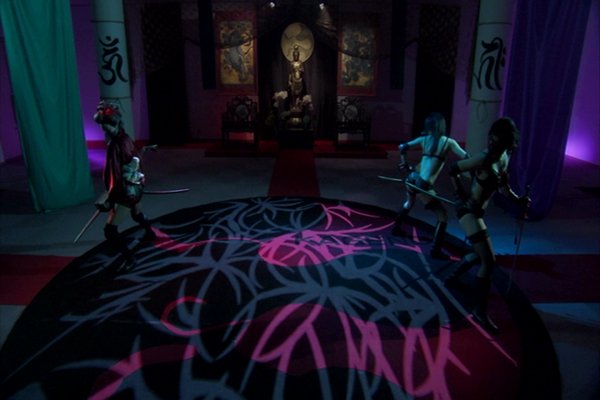
Official FAQ for RoboGeisha: It’s from Japan.
That is all.
Overview: Just when you thought Japanese cyberpunk couldn’t possibly get any stranger (or bloodier), evil genius Noboru Iguchi (Tokyo Gore Police) ups the ante… and bloodshed… with RoboGeisha.
Actually most of the bloodshed is in the unrated version; It was added via CGI for the DVD releases since Iguchi was asked to tone down the violence. But that still doesn’t degrade the overall weirdness, even with a sibling-rivalry storyline the would have worked better as standard-issue melodrama.
The Story: Yoshie (Aya Kiguchi) is a geisha’s attendant with dreams of becoming one herself. Her older sister, Kikue (Hitomi Hasebe), is the geisha who takes delight in keeping Yoshie’s dream unrealized. When the president of Kageno Steel Manufacturing discovers Yoshie’s hidden rage and fighting skills he wants to recruit her to join the Hidden Geishas, an army of cyberneticaly enhanced female assassins being trained to kill “corrupt” Japanese officials so the company can create its ideal world. But when Yoshie is given an assignment to kill a group of people whose family members have been kidnapped to become the Hidden Geishas, she soon discovers the company’s plans to destroy Japan.
As if trying to save Japan wasn’t hard enough, Yoshie is always trying to earn Kikue’s respect since she wasn’t getting any while trying to be a geisha. Yoshie does give Kikue a taste of her own medicine when she was chosen for the Hidden Geishas, until Kikue showed a predilection for killing. The two sisters compete as each wants to destroy the other, even though they show respect and love for each other as the company pushes its agenda forward.
1000 Ways to Die… Give or Take. When dealing with cyborgs and androids, you know someone is going to die. The main question is how? Iguchi manages to come up with some innovative ways…

USELESS FACT: About 70% of Japanese adults are lactose intolerant.
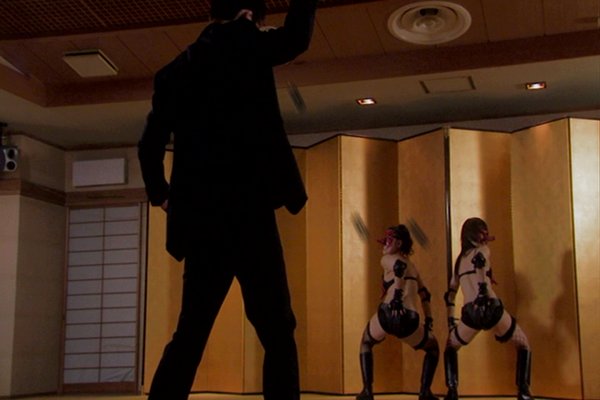
When you see it, you’ll shit… shurikens?
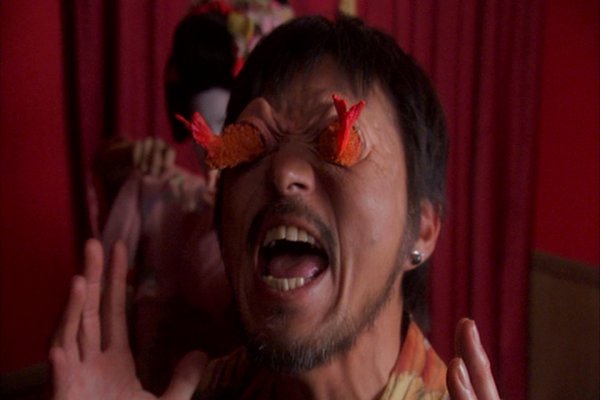
“The fried shrimp! They do NOTHING! I STILL CAN’T UNSEE!!!
Too much blood? Iguchi was asked to tone down the violence for RoboGeisha. He did for the theatrical release, but added it back for the DVDs. An interesting strategy, saving time on re-shoots and money on cleanups, but end result doesn’t really add much… other than blood (check this page that shows the comparison between theatrical and home releases). Even so, what was left in still looks cheesy, and even inappropriate at times, like when the giant shiro robot was stomping through town and stops to smash a couple of buildings that bleed.

Can someone get this poor girl a fresh tampon?
To compare to some other Japanese cyberpunk films, the violence in Tetsuo was more social commentary, while Tokyo Gore Police went for shock value. RoboGeisha’s violence tends to be more cartoonish, like Tom and Jerry with more splatter. Combine that with ass-katanas, lactating demon-cyborgs, and enough blood-cheese to rival Wisconsin and you’ll be ROFLMAO Zedong going ZOMGWTFKMFDMBBQ. That or you’ll just ask yourself…

Conclusion: So far, Japan’s track record for TFWO cyberpunk fare remains intact. RoboGeisha may be the best place to start for those who can’t stomach the more brutal stuff. Definitely shows that cyberpunk can have a sense of humor… a dark, disturbing, sick, twisted sense of humor…
Our thoughts and prayers go out to the people of Japan in the wake of the Sendai earthquake and tsunami and the Fukushima I nuclear plant accidents.
Movie Review By: SSJKamui (Reviewer Forum link)
Year: 2008
Directed by: Yoshiro Nishimura
Written by: Kengo Kaji, Sayako Nakoshi and Yoshihiro Nishimura
IMDB Reference
Degree of Cyberpunk Visuals: High
Correlation to Cyberpunk Themes: Medium
Key Cast Members:
Ruka: Eihi Shiina
Keyman: Itsuji Itao
Tokyo Police Chief: Yukihide Benny
Barabara-Man: Jiji Bû
Bar Independent Diner: Ikuko Sawada
Dog Girl : Cay Izumi
Rating: 5 out of 10
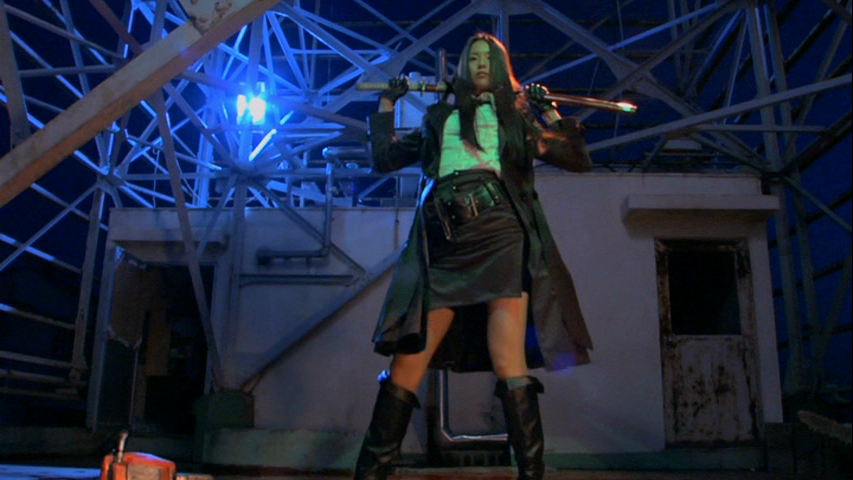
Looking for a good scare this Halloween? Tokyo Gore Police may have what you’re looking for. Be warned: The visuals may be more… “intense” than what most would go for. Let’s say this shit makes your “Friday the 13th, Nightmare on Elm Street, Texas Chainsaw Massacre,” and “Saw” franchises look like Disney productions.
Overview: Tokyo Gore Police is a “Japanese Cyberpunk” splatter movie created by the producers of “The Machine Girl”. The movie is a remake of the independent movie “Anatomia Extinction”. Currently, a prequel short for the movie is in production.
Plot: In the future, the privatized police, under control of the “Tokyo Police Corporation” has developed an extremely brutal, merciless law and order type way of action.
The whole society developed into a sadistic, pervert society with an obsession of violence.
Ruka is the daughter of a policeman who was assassinated in a very brutal way before the police was privatized. Because Ruka saw the assassination of her father, she was traumatized and developed self harming behavior. After the death of her father, she was adopted and raised by the chief officer of the Police Corporation.
Later, an outbreak of a virus causes the infected people to mutate into bizarre monsters. The virus was created by a mad scientist to take revenge on the death of his father by the police. Later, it’s revealed that the father of the mad scientist is actually the murderer of Ruka’s father and the reason for the assassination was actually a conspiracy within the police, where the chief officer of the new Police Corporation has got a key role.
After most mutants were killed by Ruka, the police start a Purge like action where also seemingly randomly civilians get hunted. Among the murdered civilians is also a close friend of Ruka. Because of this and the involvement of her foster father in the assassination of her biological father, Ruka gets mad and starts mutating, too. She fights the policemen and then encounters her foster father. Her father, who started mutating, too and using injections of the virus to get more powerfull starts fighting against his foster daughter.
The story of the film is full of sick moments and extremely brutal scenes. For example, a mutant is a prostitute who eats her customers. There is also a huge amount of psycho-sexual horror, like in the works of H.R.Giger and most other “Japanese Cyberpunk movies”, but some scenes are more funny than scary.
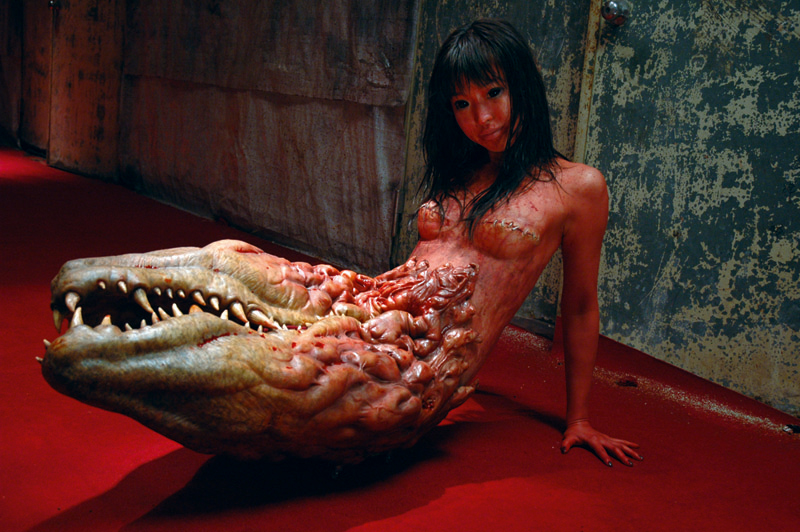
“Vagina dentata” much?
The movie has got a huge amount of black humorous moments. For example, like in the Robocop movies, in the movie, there are certain fake commercial scenes advertising very sick things or speaking funny warnings. For example, knifes for self cutting are advertised in an extremely sick way and there is a television warning that committing Hara-kiri will result in your death. The chief officer of the police also has got a kind of “Cyborg Dog” who looks like a BDSM Costume.
The depiction of the police in the movie is also the clichéd “ultra violent law and order” policemen type which often appear in Cyberpunk works. The most famous ones are Robocop and Judge Dredd.
I agree with the Review on DVD Times.com , the film definitely reminds on Blade Runner, but it mostly lacks the brilliant atmosphere of Blade Runner. Only the driving scene through the streets of Tokyo and the Bar Scene catch a similar, brilliant atmosphere.
The opening scene, where at first, all is peacefull, but suddenly, Rukas father is killed in a very brutal way was one of the best depictions of the concept of “the Real” by the psychologist Jacques Lacan, a kind of traumatic, unexplainable event suddenly appearing which is threatening the function of the mind, I have ever seen.
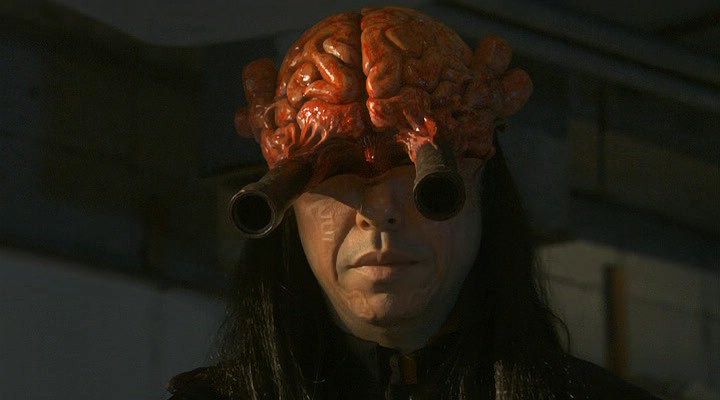
Speaking of unexplainable events suddenly appearing which is threatening the function of the mind…
On most parts, the movie is extremely entertaining, but I don’t understand these “police purge” scenes near the end of the movie and to me, these scenes doesn’t really make sense. The story of the movie isn’t very intellectual, but it’s a good satire on the actions of these populist law and order politicians. The story is also more complex than these Japanese Cyberpunk movies starring Dr.Joseph Mengele like Mad Scientists performing cruel experiments.
Conclusion: Tokyo Gore Police is a truly sick brutal movie like most Japanese cyberpunk films. The story is also not very original and is mostly extremely thin. Nevertheless, it’s still an entertaining satire which can’t be taken seriously. Like all “Japanese Cyberpunk movies”, if you have got problems with violence, you won’t like this movie. Most of the horror scenes aren’t as scary as the horror scenes of the movies Yu On and The Ring, although these movies are less brutal.
Movie Review By: SFAM
Year: 2004
Directed by: Hiroki Yamaguchi
Written by: Hiroki Yamaguchi
IMDB Reference
Degree of Cyberpunk Visuals: High
Correlation to Cyberpunk Themes: High
Key Cast Members:
- Luchino: Luchino Fujisaki
- Elevator Operator: Ninalada Mochiduki
- Business Man: Viblio Sawatsukumori
- Housewife: Alamocia Nakaji
- Headphone Guy: Nocosh Utsunomiya
- Serial Rapist (prisoner): Zitacock Obitani
- Bomber (prisonor): Calpico Teranouchi
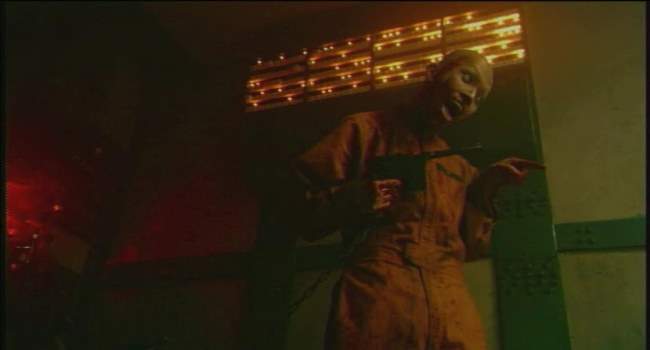
Overview: One thing I love about Indie movies is the opportunity for complete originality. Indie director Hiroki Yamaguchi delivers a strange, but very well made micro-budget movie that is truly unique. From viewing the extras, virtually every part of the set was designed by searching through junkyards for throw-offs. Similar to the Cube, Hellevator: The Bottled Fools largely takes place on a single set. Similar to Brazil, the world of Hellevator is a bizarrely dystopic surveillance society where things just don’t seem to work right. Nobody got paid who worked on this, but you wouldn’t know it from the quality. Hellevator definitely has its own feel.
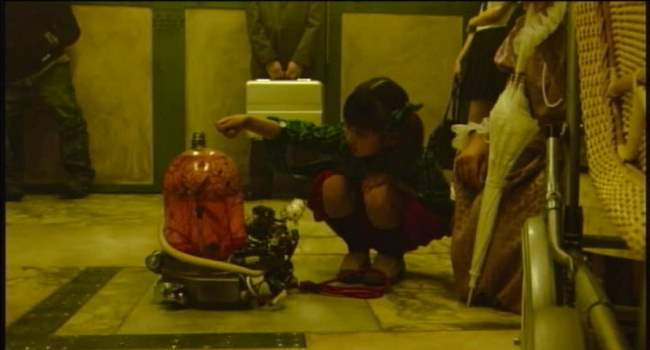
The Setting: Hellevator takes place in a non-specific dystopic near future, where a colony of people have long ago decided to move underground. While some aspects of life clearly involve advanced technologies, there is a strong analog, mechanistic component to society. Now, all life takes place in a very large megalopolis comprised of a set of very large levels and tunnels. Life is fully governed by an omnipresent security force, who have cameras in all key locations. Over 130 levels in all, each has a specific purpose. Some have hospitals or schools, others are power centers, and Level 99 is the prison ward. Because everything is underground, issues related to air quality are at a premium. Smoking is illegal, and merits a death sentence. To get from each level, people use these very large, mechanical elevators.
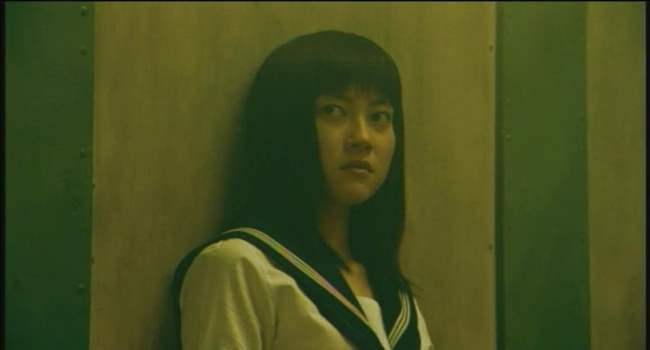
The Story: The beginning of Hellevator starts off with a television report of a set of explosions on Level 138, which ends up killing over 100 people. The police have pegged a few suspects of causing this crime, both of which ended up stuck on an elevator which malfunctioned during the explosion. Flashback to Luchino (played by Luchino Fujisaki) who is a troubled teen-age girl living on Level 138 who is on her way to school, which is on Level 4. She has a penchant for rebelling against the system and starts her day by illegally purchasing cigarettes from a drug dealer. Unfortunately, she almost gets caught, and ends up leaving her still burning cigarette butt at the power center near a set of flammable fluid containers.
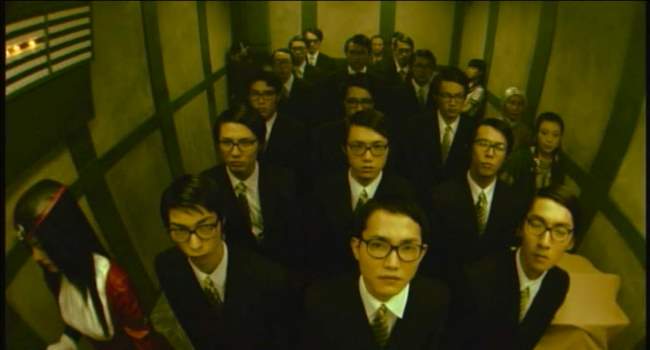
Luchino gets on the elevator to take her to level 4, which is where the rest of the story takes place. On each floor, new people get on while others leave. Eventually when the elevator gets past 110, the elevator operator announces that they have entered the “express mode” – no more stops should occur for a long time. At this point, the elevator is holding the white-gloved elevator operator (Ninalada Mochiduki), a business man (Viblio Sawatsukumori), a woman with a baby carriage (Alamocia Nakaji), a quite guy with headphones (Nocosh Utsunomiya) and Luchino. Unfortunately, the elevator is force-stopped at level 99, the prison level. Two prisoners, one a bomber (Calpico Teranouchi), and the other a serial rapist (played wonderfully by Zitacock Obitani) get on with a very unstable young prison guard. Shortly afterwards, the explosion on Level 138 occurs. This causes the elevator to malfunction, and the small group is now stranded.
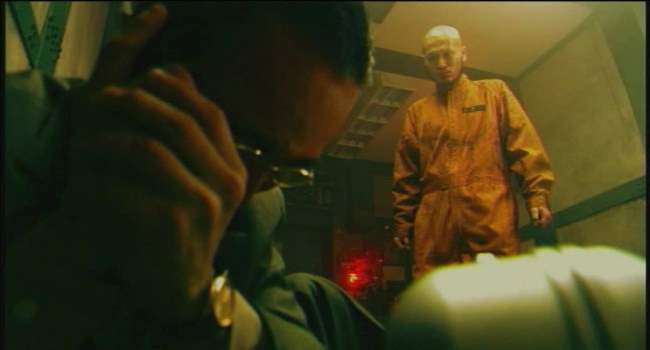
The malfunctioned elevator becomes a powder keg for runaway paranoia. The prison guard starts to lose it, and through a strange sequence of events, causes the prisoners to become free. The rapist quickly beats the guard to a pulp, which ends with a sequence where he takes a bite out of the guard’s neck. From there the prisoners sadistically start to impose their will on the beleaguered elevator participants. The rapist starts to do his thing on the elevator operator and eventually starts kicking Luchino. Luchino starts to have flashbacks of times when her father abused her similarly - Luchino eventually snaps. She picks up the gun and starts to repeatedly shoot the bomber prisoner.

From there, the story devolves into a repetitive set of sequential events which cause various people on the elevator to lose control. Some result in murders while others result in interesting character expositions. Throughout, the mood is high tension paranoia. Eventually, the THX-1138-like guards break the remaining few left alive. The story then connects back to the police detective, who is in the process of interviewing those that survived the elevator trip. The ending, not discussed here, provides a different take on the world which this future takes place.
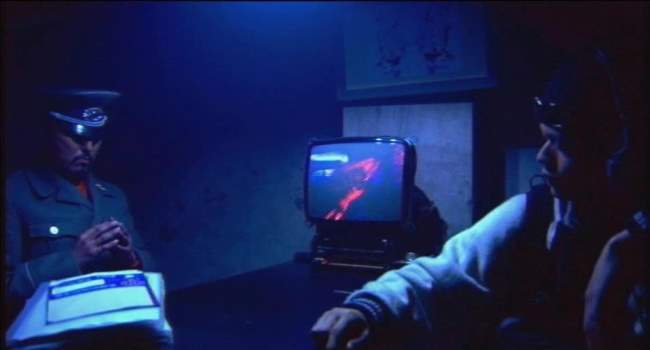
The Acting: The acting in Hellevator is far better than one would expect in a movie where nobody was getting paid. Luchino Fujisaki turns in a solid performance as a person devolving back into psychosis. Zitacock Obitani is terrific as an extremely bizarre serial rapist, and almost makes the movie a must-watch all by himself. The rest of the cast works. The only stand-out lousy performance is turned in by the blond haired prisoner guard, but he doesn’t last long enough to matter.
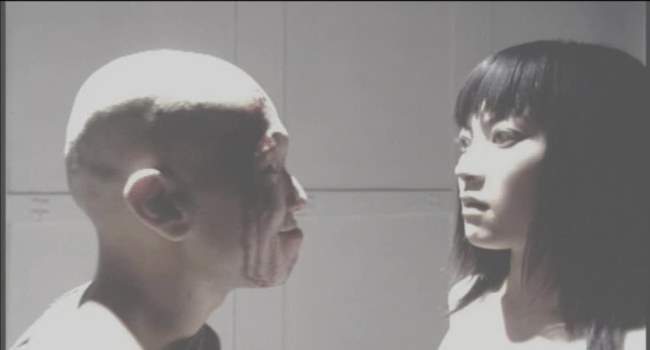
The Cinematography: Hellevator, uses two omnipresent color schemes: within the elevator, everything is dingy yellows and greens. For the police interrogation scenes, everything is dark blue. Yamaguchi makes liberal use of perspective shots, sometimes involving fish-eye lenses, and frequently looking down or up at the participants. In short, Yamaguchi makes the most of a very limited budget and set. He even throws in a Matrix slo-mo shot that was apparently filmed with a single camera.
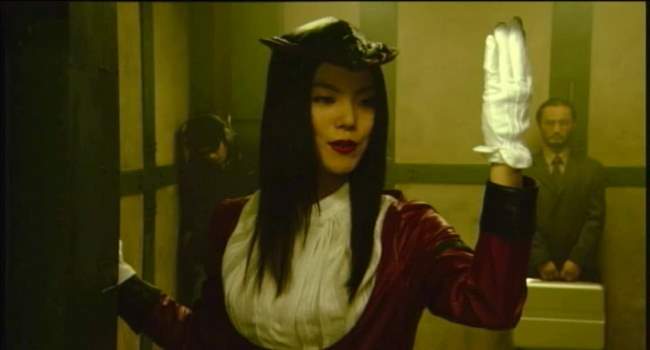
System Service Staff as Robots: In Hellevator, the elevator lady acts completely robotic until the convicts break things. Her overt disposition is of a person who never gets rattled, never intimates a personal connection, and never changes her demeanor regardless of the surroundings. In a sense, she is the perfect employee for the underground megalopolis. Similar to movies like Brazil or 1984, the elevator lady represents the humans as machines metaphor. In this view, we are nothing more than a single redundant part – a cog in a massive machine. For the ideal system employee, individualism has been quashed in favor of ritualized, repeatable routines.
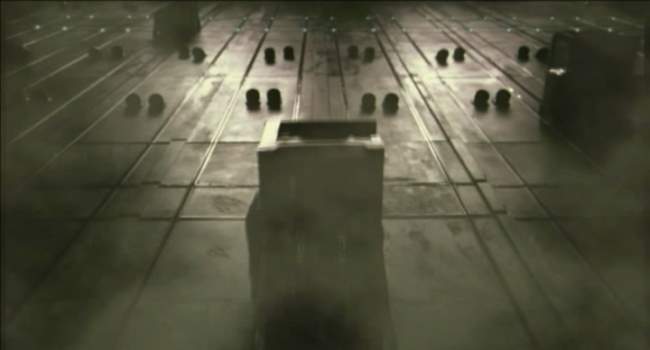
Telepathy: Hellevator does a good job of integrating telepaths into its strange world. The majority of the people are normal, and do not recognize the telepaths. In Hellevator, the Telepaths are able to notice when another uses their sensory perception. What makes Yamaguchi’s view of telepath’s somewhat interesting is he also touches on their ability to see others’ memories. This leads to some interesting flashbacks of others’ experiences on the elevator. More interesting though is the fact that Luchino’s personal psychosis colors her views of the others’ memories. This turns reading thoughts into something far less precise, and in the end makes it more believable.
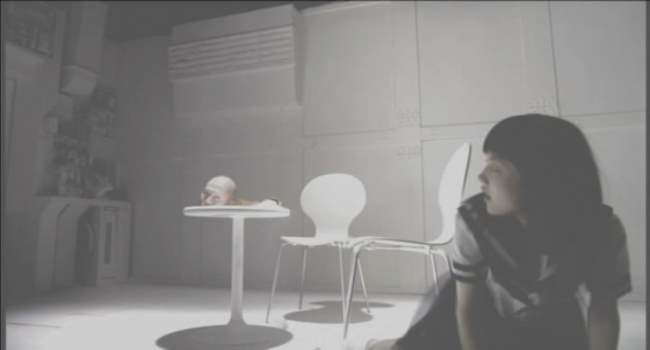
Repression Exposed by Extreme Psychological Pressure: Hellevator explores extreme psychological pressures on a group of already unstable people. Everyone stuck on the elevator is hiding something significant about themselves. The businessman is potentially a bioterrorist; the woman with the crib is hiding groceries instead of a baby, and the quiet guy in the corner is masquerading as a cop. Luchino had been abused by her father to the point that she eventually flipped and killed him. She has since repressed her issues but when placed in a similar circumstance, Luchino responds similarly and goes on to murder one of the convicts. Her perception of reality starts to bear little resemblance to the rest. The robotic elevator woman turns into an emotional basket case. Although this is a fully reasonable reaction to an attempted rape, the contrast shown is with her earlier robotic persona. In fact, everyone, when thrown into this circumstance acts in wholly strange ways.
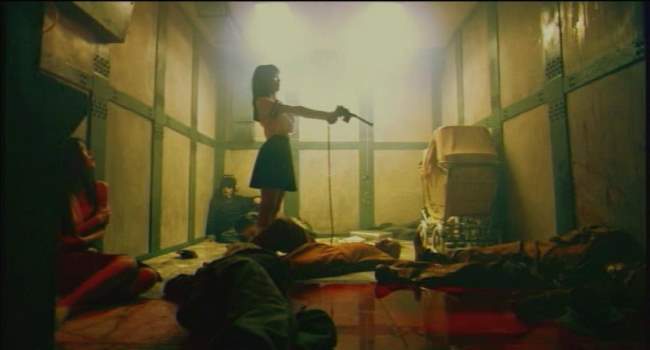
The Bottom Line: If you like Extreme Japanese Cyberpunk movies, Hellevator: The Bottled Fools is well worth a watch. There’s quite a bit of blood and gore, but not when compared to some of the more extreme straight Japanese horrors. The plot is pretty straightforward once the movie gets moving – I would have wished for a bit more interplay between the plot points. Also, there are a number of plot points which were touched on as significant, but were never completed. But overall, the movie is original and interesting. Little throwaways like the child’s pet brain only add to the fun. Yamaguchi and crew really make the most of their set and the overall shoot. This one will stay with you for a few days.
Page 2: More Screencaps –>>
Movie Review By: SFAM
Year: 1986
Directed by: Shigeru Izumiya
Written by: Shigeru Izumiya
IMDB Reference
Degree of Cyberpunk Visuals: High
Correlation to Cyberpunk Themes: Medium
Key Cast Members:
Lead Researcher (Male): Takichi Inukai
Lead Researcher (Female): Rikako Murakami
Third Researcher: Shigeru Izumiya
Guernica (Android): Mari Natsuki
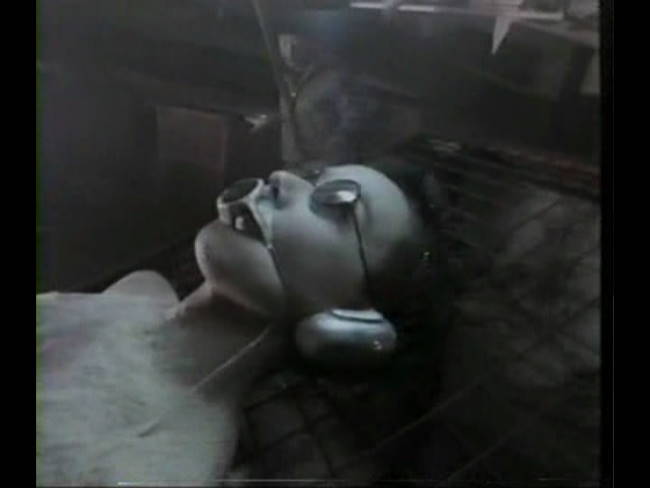
Is there life without death?
Overview: Here I yet again delve into the world of the experimental extreme Japanese Cyberpunk – this time to watch Death Power (Desu pawuda in Japanese), a movie Glam Creature discovered for me. Death Powder is a very low budget, mostly incoherent extreme Japanese Cyberpunk film with some occaisionally very interesting visuals. I probably would have liked this movie more had I obtained either a decent transfer or full subtitles. Unfortunately, the only place I could find this at the time was on LostSilver.com, a site that presses public domain movies to DVD-R format. All the main characters had appropriate subtitles, but the vast amount of mumbling in this film (mumbling usually occurred ultra-bizarre situations) was only subtitled in Chinese. The transfer was so bad that in some scenes the screen appears pixilated.
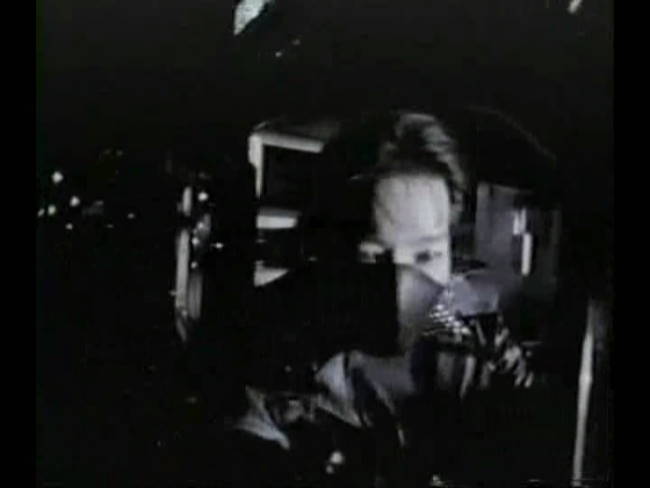
The Story: In the very near future, a group of three researchers has captured a very special android named Guernica (Mari Natsuki), and have brought her to a deserted warehouse, and have tied her to cot, with a protective covering over her mouth. One researcher (Izumiya) is left to guard the Guernica, but appears to be slowly going crazy. Two of the researchers, a guy (Inukai) and a girl (Murakami) apparently have just escaped (presumably from some fallout after capturing Guernica) and are on their way back to the warehouse. Murakami tries calling Izumiya and discovers that something is wrong.
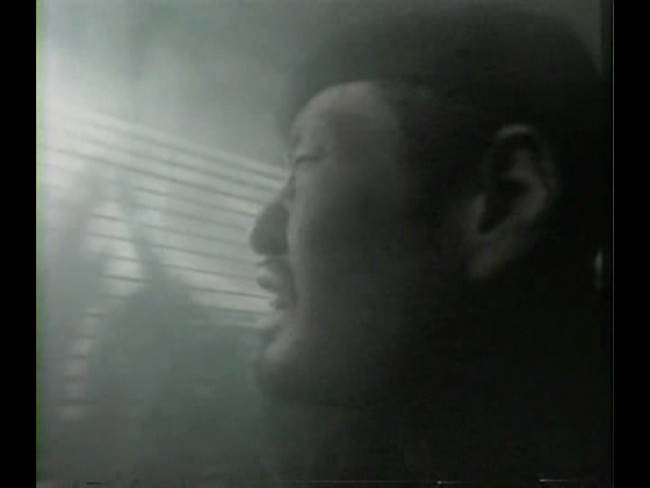
They proceed carefully into the warehouse where they discover that Izumiya has gone crazy and is now trying to kill them. Izumiya makes it to Guernica, who suddenly sits up and blows dust all over Izumiya. From there, the movie turns extremely surreal. Guernica’s body slowly disappears into dust, while Izumiya’s face starts to expand dramatically (in a very low-budget sort of way), while Izumiya rips his hand off and Inukai shoots Izumiya with a futuristic looking gun. Things settle down with Izumiya off hallucinating, while Izumiya has somehow captured and tied Inukai to Guernica’s metal cot. She gets free and beats Izumiya to a pulp.
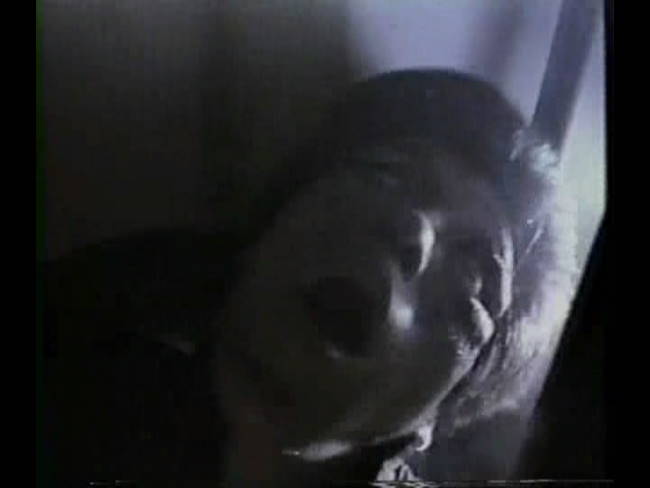
Sometimes death is the ultimate statement.
Meanwhile, Inukai’s hallucinations have provided him omniscience. Inijai proclaims, “”I understand the secrets of the flesh.” He sees Guernica’s origins and the ongoing struggle with the scar people, who are people who’s flesh is slowly decaying on their bodies. Things get even weirder from there with visuals of massive globs of oozing puss creatures with eyes, an incoherent video montage, a fight with the scar people, and in the end, we find a very bizarre looking monster sitting in a vast setting of emptiness.
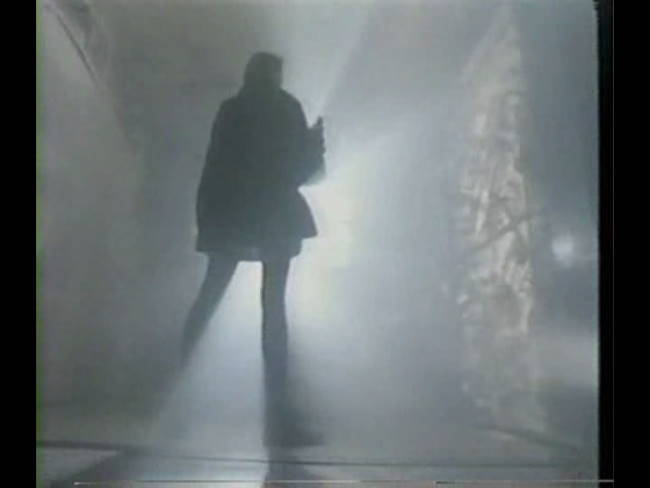
What The Fuck is This Film About??? I fully acknowledge that Death Powder is incoherent enough that attempting to interpret it will potentially lead to nonsensical ambiguity. Unlike others like Tetsuo, which CLEARLY has a point even though many claim are incoherent, this film may not simply hold together well enough to have a clear point. That being said, after two watches, it appears that the death powder is an allegory for technology’s insidious and pervasive destruction of mankind. That Android chick’s name, Guernica, after Picasso’s famous painting, gives us the clue. She is the embodiment of humanity’s destructive tendencies, and like the painting, her ultimate impact is seen with dead, injured, dismembered and torn bodies. That Geurnica is created by a rock star playing an electric guitar indicates that our technology enabled modern culture is ultimately to blame. A bastardized version Christian forbidden fruit analogy also is at play here in that a woman (android) possesses the forbidden knowledge, and humanity tries to access it by capturing her and covering her mouth. The implication is that they hope to possess the knowledge without suffering the consequences.
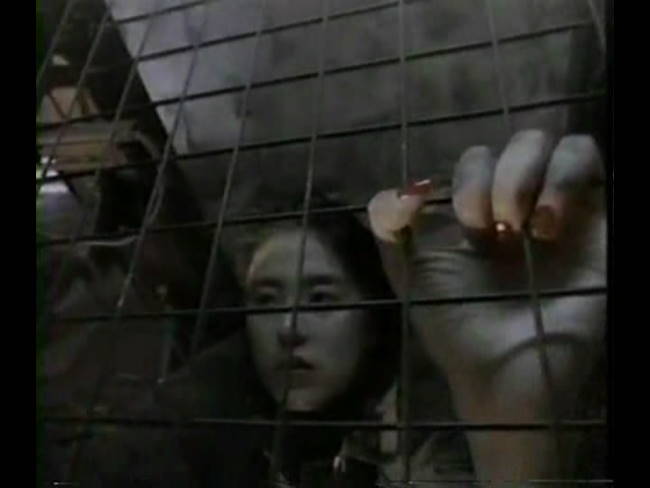
The other aspect that Izumiya seems to explore is the nexus between life and death. Death Powder explores competing ideologies in examining this question. Initially, we are told that “Life without flesh is death.” The researcher, now fully infected and potentially dead, but still thinking (meaning his flesh is dead), responds to this thought with the following:
There is no death without life. There is no Answer to this Madness.
Heaven exists within my body…dead. But Hell…Hell is everywhere!
To which, the Android, Guernica responds, “Is there life without death?” From an android’s perspective, this is probably a VERY interesting line of questioning. If you are able to think, does this not imply you are alive? But if you have no flesh – doesn’t this imply you cannot die? This is of course completely at odds with the original statement. When we include the scar people – a faceless gang of humans losing their flesh – as those espousing that life without flesh is death, we are left with a losing struggle where living humanity (flesh) is supplanted by our technological monstrosities our culture creates. In effect, Izumiya is espousing that humanity slowly dies as our culture is merged with technology. In the end, all that is left is this zombie-like monstrosity that is neither alive or dead, but definitely isn’t human.
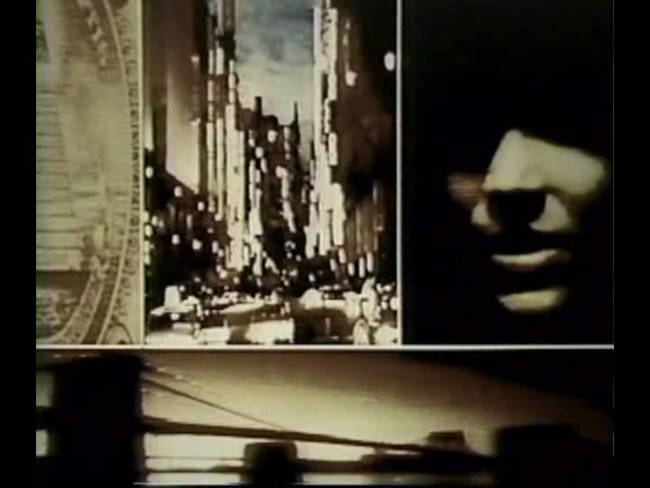
Disconnected Bizarre Video Montage: At about three-fourths through the 62 minute movie, Death Powder breaks into a ten minute plus video montage segment. This occurs after the death powder-enabled android chick states something to the effect that there are far more people to infect, so she must hurry. I’m guessing this is supposed to be Guernica’s Destroy the World tour. This would work except that when its over, we are brought right back to the warehouse, this time to await some workers who are lured into the pit of horrors. In ending it as such, the purpose of the montage seems to disappear. In the end, we are left with the idea that director Shigeru Izumiya had also developed this cool video montage footage, and wanted to include it somewhere. It does look pretty cool though.
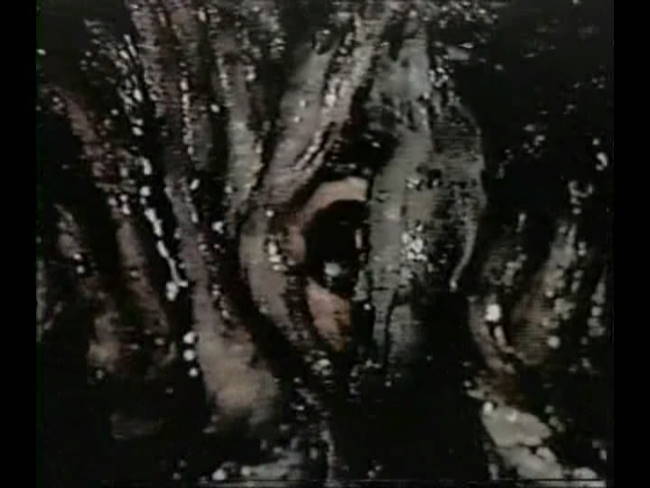
Life without flesh is death.
The Visuals: Like many experimental films, Izumiya literally throws in every kind of camera technique available. We get tons of perspective shots, multiple exposure shots, different overexposed lighting shots, completely strange camera angles (like a sideways up-above running shot), all wrapped up in a myriad of disturbing visuals. Whether we get coherency or not, Death Powder is certainly creative. I really wish I had been able to obtain a better copy of the film, as I’m afraid the color is washed out on Lostsilver’s public domain version (although I don’t know – perhaps this is intentional). This leaves the film with a very washed out, almost (but not quite) black and white look.
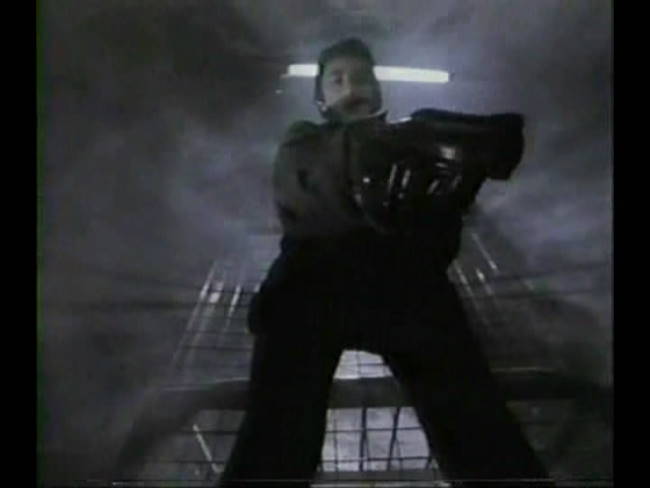
The Sound: Perhaps Death Powder’s best strength is in its sound effects. Izumiya continually barrages the audience with a cornucopia of industrial/techno cyberpunk sounds. We get various low-toned keyboard pieces combined with strange and eerie sounds of all types and textures. If I had to guess, I’d say the majority of the time spent on producing Death Powder was working with the sound track – it’s by far the most polished aspect of the movie. This may not be all that surprising considering Izumiya got his start composing for Japanese Cyberpunk director Sogo Ishii on Crazy Thunder Road.
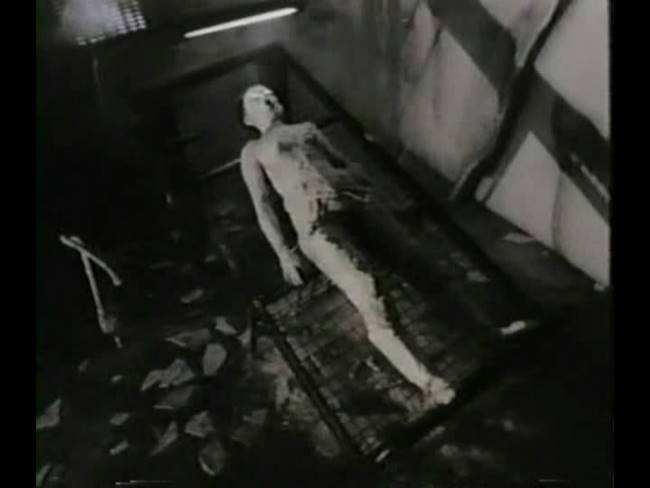
The Bottom Line: I wonder if I’ve become jaded since watching a number of these extreme Japanese Cyberpunk flicks. Many comments about Death Powder indicate that people were blown away by the visuals and have never seen anything like this – some to the point of even having nightmares about it. If this is your first, or perhaps even second experience in delving into extreme Japanese Cyberpunk movies, than perhaps Death Powder comes off much better. However, as much as I love the experimental visuals, this movie clearly could have been put together better. There is a lack of crafting in Death Powder which negatively impacts the movie-watching experience. Still, Death Powder, while incoherent, is at least unique, creative and interesting, so there’s certainly something worth watching here. It’s for this reason that I’m giving it 5 stars instead of 4. I really wish I was able to get a better transfer of this, but even if I had it, I still doubt I’d be giving it more than 5 stars.
~See movies similar to this one~
Movie Review By: SFAM
Year: 2001
Directed by: Sogo Ishii
Written by: Sogo Ishii
IMDB Reference
Degree of Cyberpunk Visuals: High
Correlation to Cyberpunk Themes: Medium
Key Cast Members:
Dragon Eye Morrison: Tadanobu Asano
Thunderbolt Buddha: Masatoshi Nagase
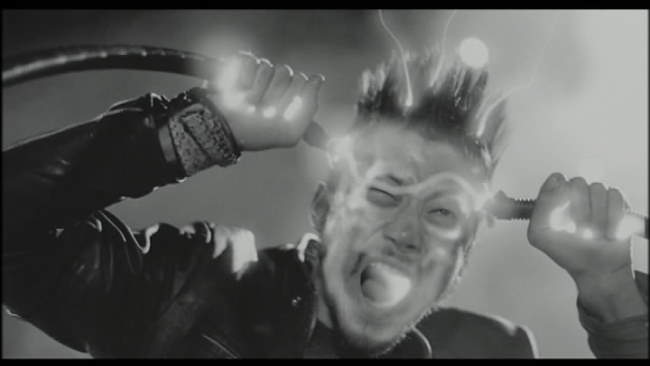
Overview: Sogo Ishii, master of the Japanese Extreme Cinema delivers a truly bizarre experience for us in Electric Dragon 80,000V. If you added the dialogue from this whole movie up, you probably wouldn’t get much more than a page or two. The story is told through visuals, and that said, the narrative itself isn’t all that deep. So why do I give the movie a decent rating? Simple – the visuals and the overall mood this film creates are absolutely unique. Electric Dragon 80,000V is first and foremost an experiential flick. The narrative definitely takes a back seat to the visual and sound integration.
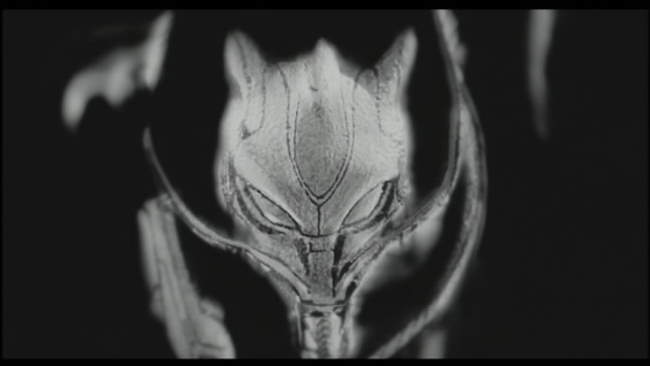
The Story: Electric Dragon 80,0000V follows the maturation of two kids who had traumatic experiences with electricity when they were young. One, Dragon Eye Morrison (played by Tadanobu Asano, who also stars as Kakihara in Ichii, the Killer), underwent electric shock treatment due to being violent as a kid – specifically, he endured 80,000 Volts of electricity. When Dragon Eye Morrison undergoes electric shock treatment, something in his reaction awakens the Dragon. The Dragon is the Eastern style dragon – one that’s embedded in all living things and the world at large. Dragon Eye Morrison’s connection with the dragon releases the rage within in, and thus, forces him to get more shock treatments. With each electric shock treatment, he develops a deeper connection with the dragon. By the time he’s an adult, Morrison can commune with reptiles (he owns a bunch), and has learned that playing REALLY LOUD guitar music (well, playing really loud anyways) is able to sooth the rage within him.
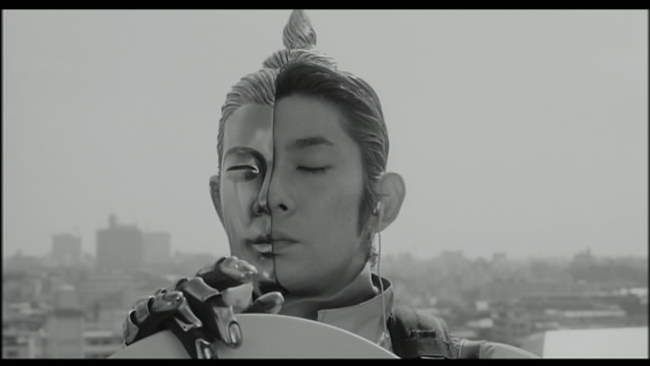
The other, Thunderbolt Buddha (Masatoshi Nagase) got electrocuted with 20 million volts while attempting to climb a power-line tower. The electricity is so high that half of his body becomes encased in metal – and in fact his personality is as split as his body. One side of him is trying to kill himself, while the other is deviously listening in on all electric conversations within his vicinity. It’s not to hard to figure out that Thunderbolt Budda is the bad guy in this modern Godzilla story.
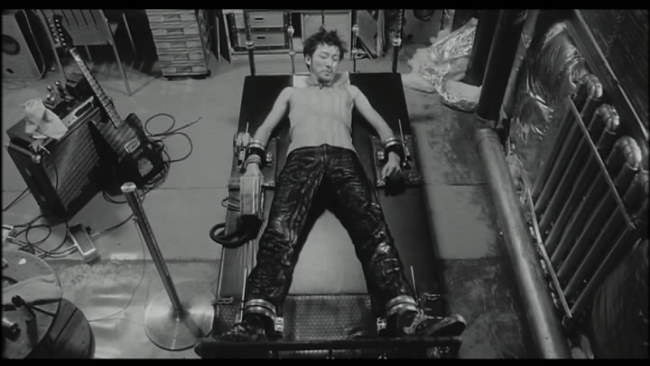
By the time they are both adults, somehow Thunderbolt Buddha, who spends his time attached to a satellite dish, scanning the city, finds out about Dragon Eye Morrison – worse, he decides that the world isn’t big enough for the both of them! So Thunderbolt invades Morrison’s apartment and kills some of his lizards and takes others prisoner. Sure enough, Dragon Eye Morrison figures out who the culprit is and they meet at high noon! From there – it. is. ON BABY!!!!
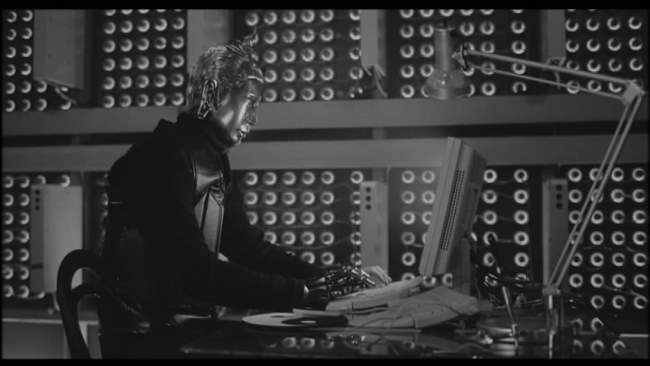
What the Fuck is This Movie About? Yes, at first glance, this movie appears to be pretty shallow and non-sensical, and it may just be. But I like deeper meanings, so allow me to intuit. OK – assuming there is any meaning one can derive from this movie, my wild ass guess is it is this – Dragon Eye Morrison represents the Dragon on earth personified, whereas Thunderbolt Buddha represents modern technology. At first glance, modern technology appears stronger than the earth (20,000 volts to 80,000), yet, due to his ability to bring the full might of the dragon to bare, he’s able to stand up to modern technology. What’s interesting about this theory is the reversal of fortunes: Dragon Eye Morrison gets transformed to merging with the Dragon (earth) due to the detrimental use of technology on him, whereas Thunderbolt Buddha is transformed by a natural occurrence – lighting. In a sense, both grow up reacting against that which transformed them. Or, um, my theory is full of bunk – you make the call. 
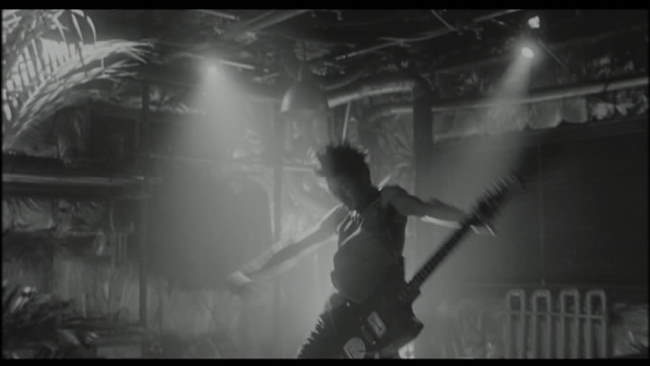
The Sound: As tightly integrated as can be, Electric Dragon 80,000V links massively loud and distorted guitar sounds with the kinetic visuals. This is really the true genius of Ishii’s work. Like all Japanese Cyberpunk movies, Electric Dragon provides an assault on the senses. Unlike most, the assault in this case isn’t as strong on notion of humanity itself, but is instead an assault on you, the viewer. To really experience this movie in the way it was intended, I STRONGLY recommend absolutely cranking the sound. If you don’t do this, you really will lose out on the mood this picture tries to set, and really, will not get the attraction
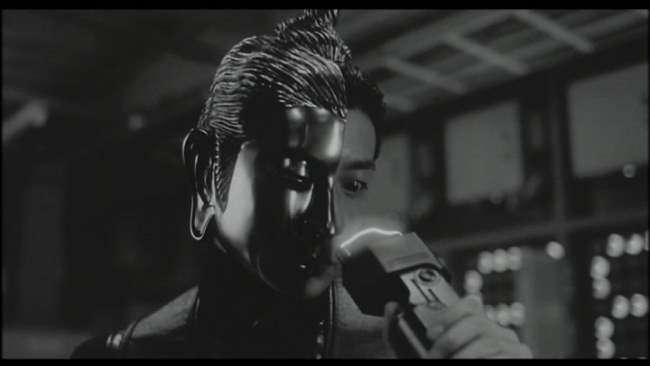
The Visuals: Electric Dragon 80,000V is really rather sedate for the first half. While well shot, the visuals aren’t really that noteworthy from a Japanese Cyberpunk standpoint. But the second half is FILLED with a bevy of truly bizarre shots. Electricity integrated with humans is the theme, and it is explored in a variety of ways, though showing various forms of electricity to kinetic shots of volts coursing through our lead characters. The second half uses the same style of stop-motion animation we get in Tetsuo - The Iron Man. While the movies are radically different, the movement of these two films is pretty similar.
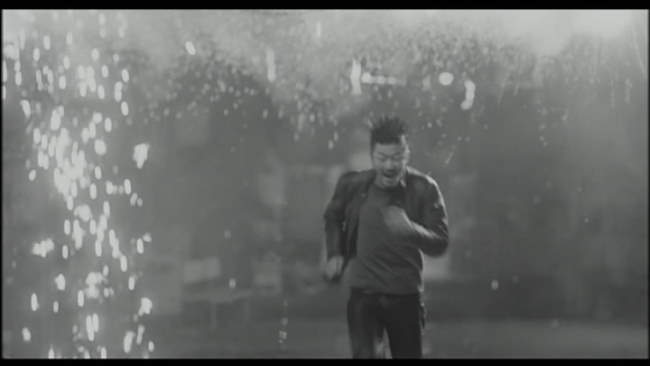
The Bottom Line: Electric Dragon 80,000V is clearly an indulgence in extremes. The mood brought on by the sounds and visuals far outweighs what little exists of the narrative. In the end, Electric Dragon 80,000V is either a movie you really dig or absolutely abhor. For this reason, I find it pretty difficult to give a solid rating, so I’ve gone with 7 stars - which implies that it’s a good movie, but one that some may not like. The entire thing is barely 50 minutes, so if you find yourself hating it, not to worry, it will be over soon. If you do like it though, Electric Dragon 80,000V has solid replay value.
~See movies similar to this one~
Movie Review By: SFAM
Year: 1991
Directed by: Shozin Fukui
Written by: Shozin Fukui
IMDB Reference
Degree of Cyberpunk Visuals: High
Correlation to Cyberpunk Themes: Medium
Key Cast Members:
Pinocchio 964: Hage Suzuki
Himiko: Onn Chan
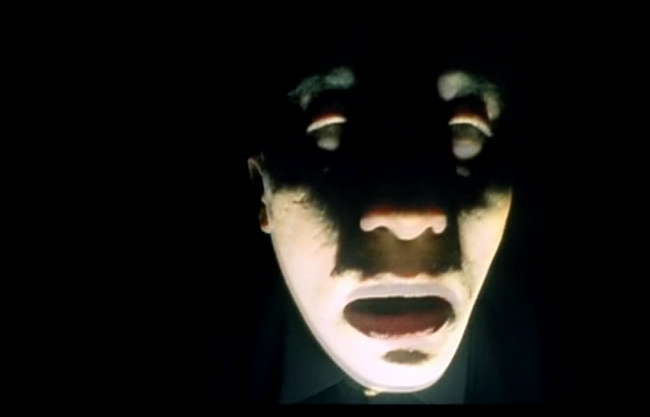
Overview: Back in 1991, Shozin Fukui and crew created a no-budget movie that provided yet another view of Japanese Cyberpunk, one very different from the first Japanese Cyberpunk movie, Tetsuo. In 964 Pinocchio, we don’t get an external merging of man and machine parts – instead, we see the residue of extreme internal struggles – ones that overwhelm the protagonists. The images are very intense, and the pacing is erratic and fast paced. While this movie is uneven and haphazard in places, 964 Pinocchio is definitely a unique experience.
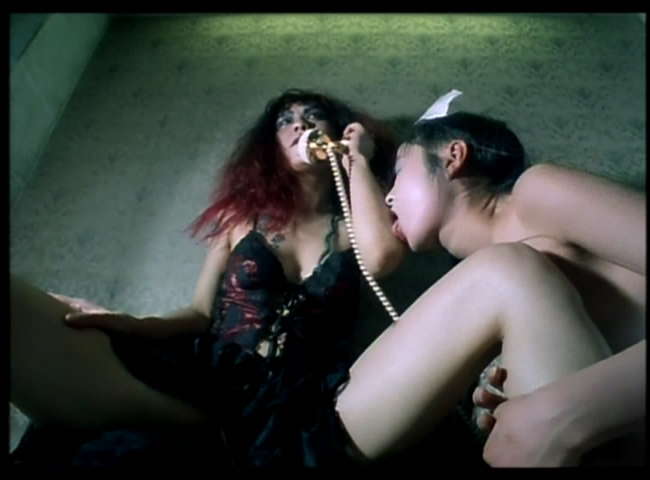
The Story: In this film, 964 Pinocchio (Hage Suzuki) is a strange type of cyborg – someone that used to be human but now has been transformed into a sex slave sold as product. Unfortunately, he no longer “functions” so his owners, a pair of sex-crazed, truly bizarre and sadistic chicks, have thrown him out in the street. Simultaneously, a nurse with a mysterious past, named Himiko (played by Onn Chan), has lost her memory, and she too has been evicted to the streets.
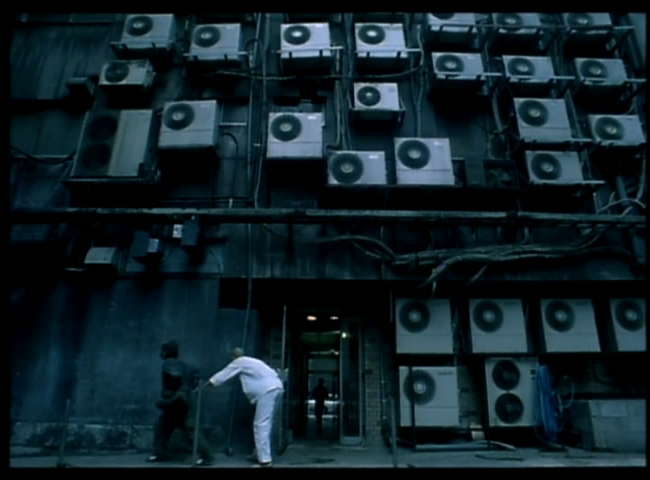
The two outcasts meet up and seem to have a strange attraction to one another. As 964 Pinocchio is essentially a child who seems to have little understanding or awareness of the external world, Himiko takes care of him. She takes him to her living quarters in the basement of a deserted building, and takes him on a food shopping spree where they steal and eat food in the grocery store. Himiko finds out that the corporation that produced Pinocchio is feverishly looking for him, as they are afraid that their illegal process for creating sex slaves will be made public.
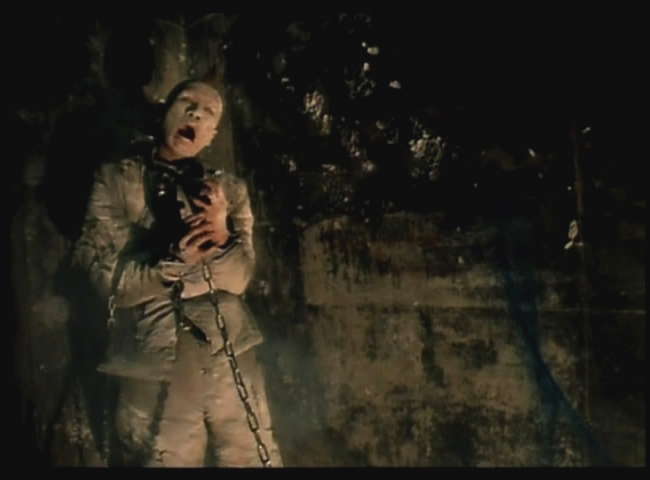
Eventually, 964 Pinocchio starts to gain awareness, and begins to wonder what has happened to him. After becoming frightened and agitated, Himiko calms him down, and then they both realize they have found a “like” soul and then make love (apparently 964 Pinocchio is able to perform when his feelings are re-engaged). Unfortunately, this event unleashes unseen forces inside of 964 Pinocchio – forces that are past the point of control. In short, all hell breaks lose – 964 Pinocchio begins spouting bodily fluids of all kinds and Himiko is thrown against the wall, and finally begins experiencing her own version of the horror. From there, the movie becomes a experiential voyage into the crazed and surreal. The corporation is still after 964 Pinocchio, but they soon discover he is not the same as he once was.
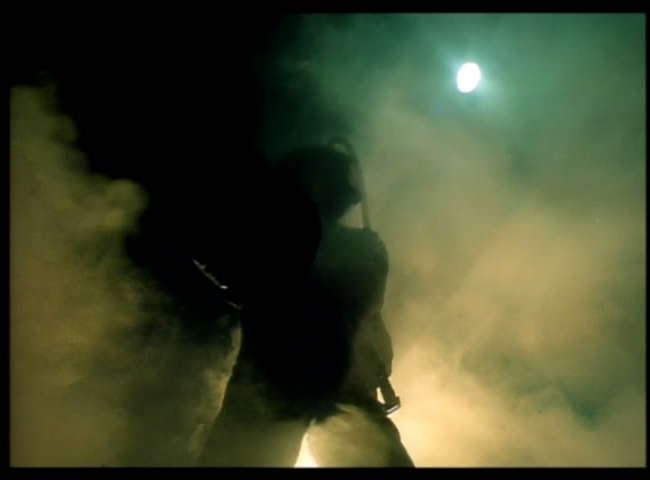
Rubber’s Lover is the Prequel to 964 Pinocchio: Even though it was created 5 years later, Fukia’s Rubber’s Lover is a sequel of sorts to 964 Pinocchio. In this film, we never really understand the process for how Pinocchio was created. Rubber’s Lover gives us a view of this. While the cover for the DVD describes 964 Pinocchio as an android, he’s really not. In fact, he’s virtually all human (although there is a drill to the forehead scene that shows brain matter being removed). If Rubber’s Lover is any guide, he was created by intense sound waves and special chemicals. So at one point he “was” human, but now is “post-human.”
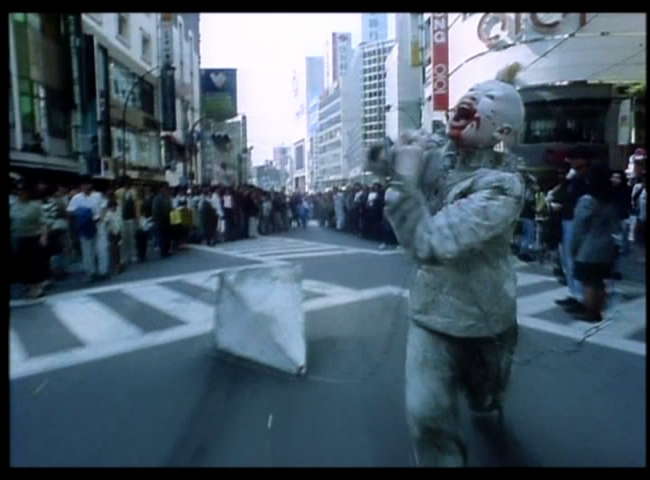
Note to Low Budget Japanese Cyberpunk Film Makers – Use B&W: Because of the low to no budget nature of 964 Pinocchio, the FX are not top quality. While they probably worked better prior to the CG world that we have today, similar to Videodrome, they look very dated in places now. This takes away from the impact of the movie to the point that it just doesn’t really work now unless you put it on a big screen and really crank up the sound. In comparing Tsukamoto’s Tetsuo (a B&W movie) to Tetsuo II: Bodyhammer (a color movie) and Fukui’s Rubber’s Lover (a B&W movie) to 964 Pinocchio, it’s clear that the mood, visuals and ambiance required for Japanese Cyberpunk is FAR better provided by B&W over color. In addition to both Tetsuo and Rubber’s Lover being better movies, they are both FAR more immersive. The low-budget B&W effects don’t detract from the mood, whereas in comparison the color effects look very fake. As an added benefit, shooting in B&W gives the film maker the a critical tool for cyberpunk mood setting: shadows. The use of shadows in a B&W film serve to create a dark, noir feeling which automatically serves up a non-normal mood.
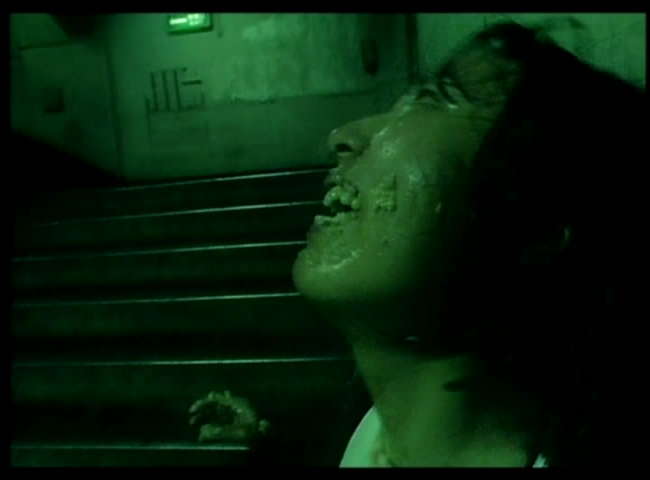
If You Have Vomit Fetish, 964 Pinocchio is For You! Fukui CLEARLY has a vomit fetish, and decides to share it with us in 964 Pinocchio. We’re not talking a wee bit’O vomit coming out - we’re talkin GALLONS worth! Himiko in particular vomits, wipes it on herself, wallows in it, and then eats it all back up! Yummy!
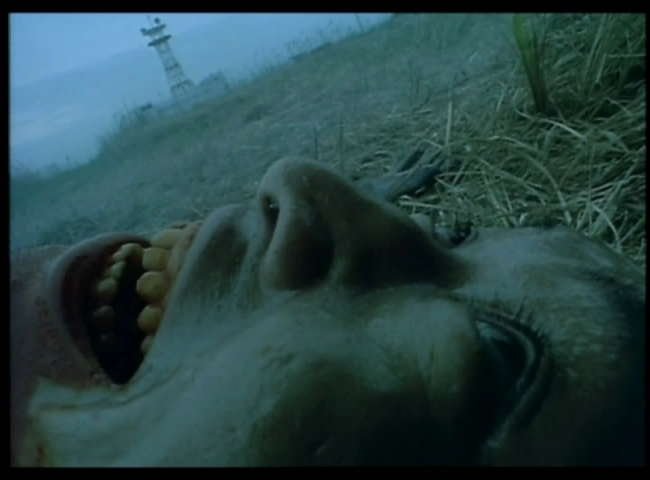
The Bottom Line: 964 Pinocchio is not polished fare, but it does etch out a place in the history of cyberpunk. The story is rather basic, and is really beside the point (many are left confused at the ending – page 2 gives a spoiler understanding if interested). The purpose is to create an immersive mood that details what happens when a dominant power emerges and exceeds human physical capacities. 964 Pinocchio is not for everyone – in fact it’s for a select few. If you aren’t a fan of extreme horror, gruesome imagery, constant screaming, jagged camera work and intense emotions, this movie is probably not for you. If you just want to see a Fukui film, you’re probably better off picking Rubber’s Lover. But if you want an instance of Japanese Cyberpunk in color – the first one in fact – 964 Pinocchio merits a watch.
Page 2: More Intense Screencaps and Spoiler Understanding of the Ending–>
~See movies similar to this one~
Year: 1992
Directed by: Shinya Tsukamoto
Written by: Shinya Tsukamoto
IMDB Reference
Degree of Cyberpunk Visuals: High
Correlation to Cyberpunk Themes: Medium
Key Cast Members:
Taniguchi Tomoo: Tomorowo Taguchi

Overview: Unlike the tagline (should not be missed…), I think its quite OK to miss Tetsuo II, especially if you’ve already seen the real thing. In Tetsuo II, Tsukamoto substitutes a larger budget in lieu of the unique and innovative narrative we find in Tetsuo - the Iron Man. The compromise is bad all around. For starters, this style of merging man and machine works FAR better in B&W than it does in color. The surreal believability factor of the FX drops significantly in color. As for the story, the whole idea of centering the conflict around a family setting significantly lessens the power of his earlier story, as does Tsukamoto’s attempt to add a more coherent narrative. While his point still seems to be the same one, its told with lots less force, in a far less interesting way, and also in a far less shocking way.
The Bottom Line: I can take screencaps of this if anyone is dying to see the visuals (I understand it’s out of print), but it’s just not a great movie. Tetsuo: Bodyhammer is OK to see this as long as you understand you’re getting a Japanese Cyberpunk movies that’s far less than Tetsuo - Iron Man, or even less than Rubber’s Lover, for that matter. I’ve heard people comment that Bodyhammer sucks so they aren’t interested in seeing the first one - don’t buy this reasoning. While the first screams uniqueness, Body Hammer whimpers “cash in on my earlier success by cutting back the edginess and going more mainstream.” It even stars Tomorowo Taguchi again, who attempts to reprise the same role and crazed scream faces - only this time it comes across more as the last show in a long day of staged repeat performances, similar to what you might find in a theater act at an amusement park late on a Sunday evening. In that sense, Body Hammer comes off as a sequel in true hollywood style.
~See movies similar to this one~
Year: 1988
Directed by: Kazuhito Kuramoto
Written by: Kazuhito Kuramoto
IMDB Reference
Degree of Cyberpunk Visuals: Medium
Correlation to Cyberpunk Themes: Medium
Key Cast Members:
Dwarf Scientist: Toshihiko Hino
Scientist’s dying sister: Mio Takaki
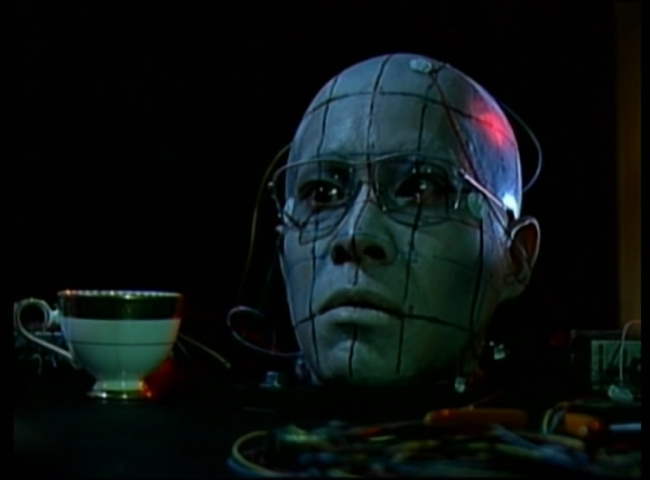
Overview: Japanese Cyberpunk films are always looking to extend the boundaries of humanity, but hopefully they do so within the constraints of a semi-coherent plot, with actions by the characters that make sense within the twisted view of the narrative. Android of Notre Dame does away with most of that, and instead goes for massive gross-out scenes with characters whose actions rarely make sense. Gooey substances of all colors and textures come spewing out of every crevice possible from this head in the above shot.
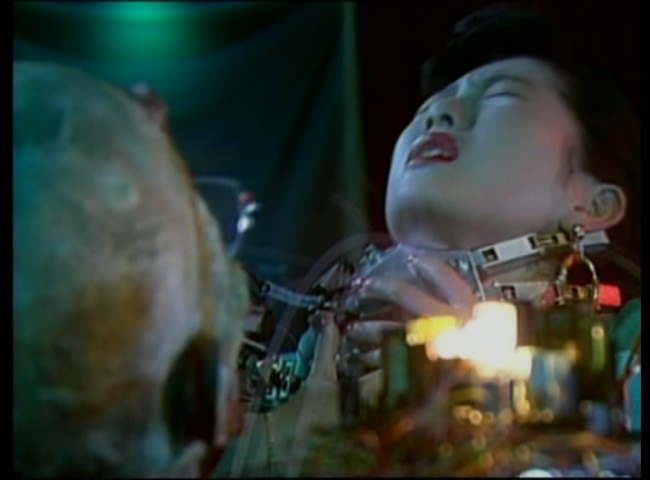
This story, such as it is, has a Japanese dwarf scientist playing a modern-day Dr. Frankenstein (well, Dr. Frankenstein as the hunchback of Notre Dame, actually) in an attempt to find a way to prolong his dying sister’s life. Yet, instead of going to the morgue, he goes out and finds associates, kills them in gruesome ways and then performs experiments on their various body parts. His most successful one is shown in the picture at the top, where he takes a guy’s head and hooks him up to a variety of wires and implants that allow the “android” (or really, we would call this a cyborg) to have facial movements, control a robotic arm and also can record his visual perceptions into a television. He also has his cyborg head kill this other chick so he can remove her heart in an attempt to fix his dying sister’s heart.
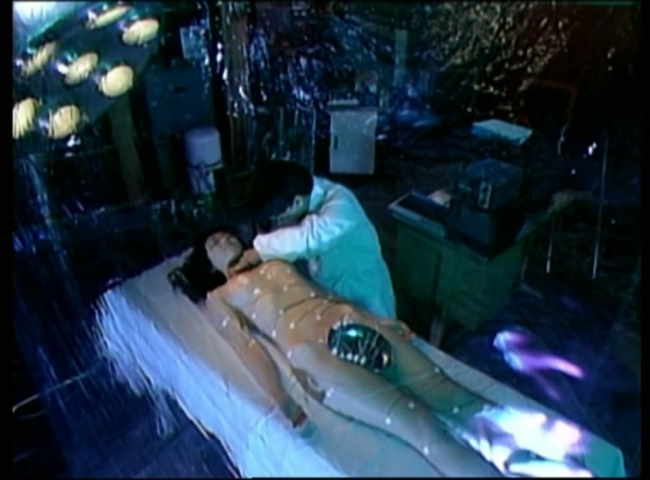
Image modified to obfuscate nudity. Go here if interested in seeing the unmodified image.
The Bottom Line: The idea behind Android of Notre Dame is rich, and, had it been executed better, might have yielded a pretty good Japanese Cyberpunk Flick. The ending scene in particular, where we see the scientist’s final failed solution is especially intriguing. Unfortunately, it seems that the Kuramoto was more interested in capturing gross-out scenes than he was in pursuing a promising, if limited story line.
~See movies similar to this one~
Year: 1996
Directed by: Shozin Fukui
Written by: Shozin Fukui
IMDB Reference
Degree of Cyberpunk Visuals: High
Correlation to Cyberpunk Themes: Medium
Key Cast Members:
Kiku: Nao
Shimika: Youta Kawase
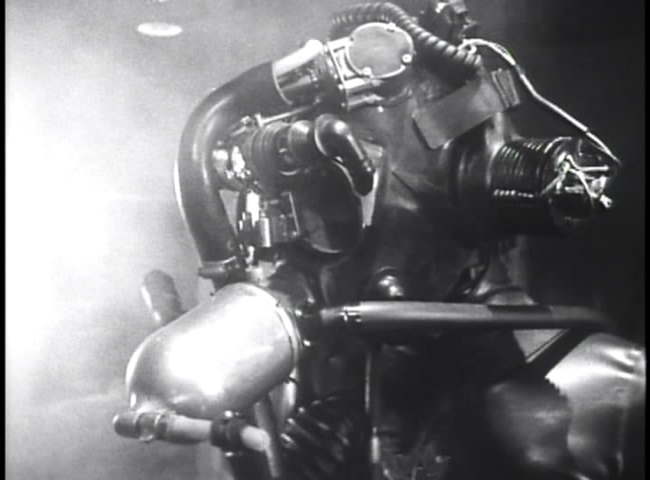
Rectal injection for instant effect!
Overview: Rubber’s Lover is one of the truly bizarre Japanese cyberpunk films. Rubber’s Lover is an extreme cyberpunk movie that includes a number of truly outlandish violence and sex scenes. Fukui’s entire message here is summed up well on his interview on the DVD, “Dominant power comes when mental anguish exceeds physical tolerance.” Truly, this is what this movie is about. Chances are, for most of you, this movie will be pretty much completely different from anything you’ve ever seen - which is reason enough to watch it.
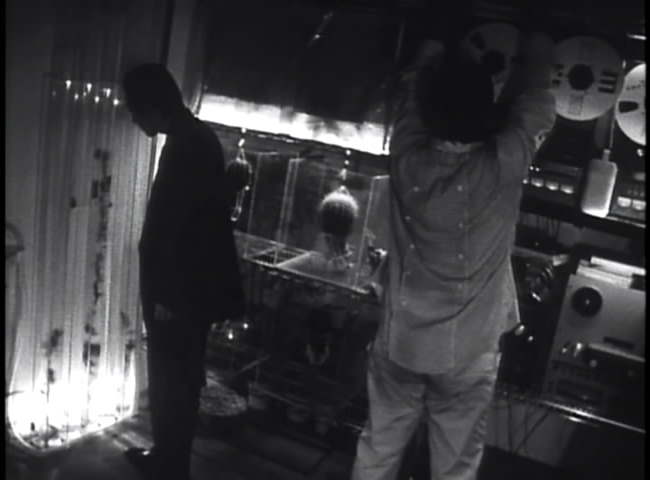
The story concerns three scientists who are attempting to create psychic powers in their test subjects. They use a combination of customized psychotropic drugs and extreme sound wave patterns engineered to torture their test subjects into unimagined mental states in the hopes of surpassing their normal mental abilities. Unfortunately, their test subjects have a tendency to die gruesome deaths by exploding blood everywhere. The corporation funding the research has decided to pull the plug, and have sent Kiku, a low ranking finance employee (who is about to quit to marry the head manager) to relay the news. Two of the scientists go mad and decide to administer the torture treatment to the third scientist, Shimika, as their last hope for developing psychic powers. When Kiku she discovers their torture chamber, one of the scientists abducts and rapes her, and then includes her as a test subject. Shimika and Kiku join forces and try to escape but are captured again and are then subjected to extreme torture in hopes of increasing the speed of success.
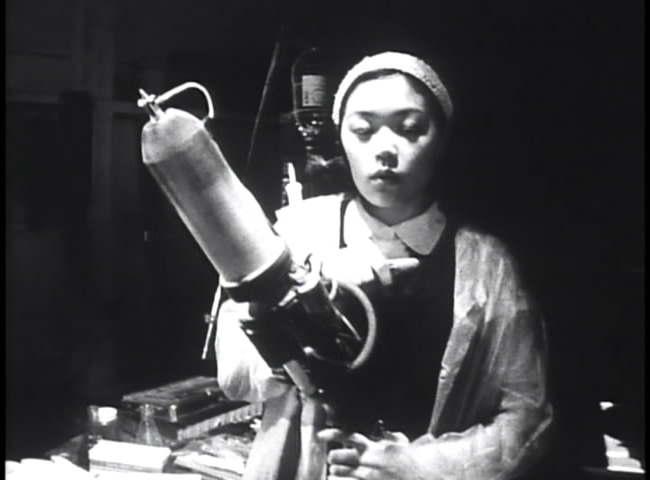
Unfortunately for the scientists, they are successful. During the infamous “rubber suit” treatment, Shimika exhibits massive psychic abilities – so much so that he no longer needs the equipment to mentally attack his captors. There are various side characters in this including Kiki’s corporate slimebag fiancé, and an assistant chick who has a penchant for slapping test subjects.
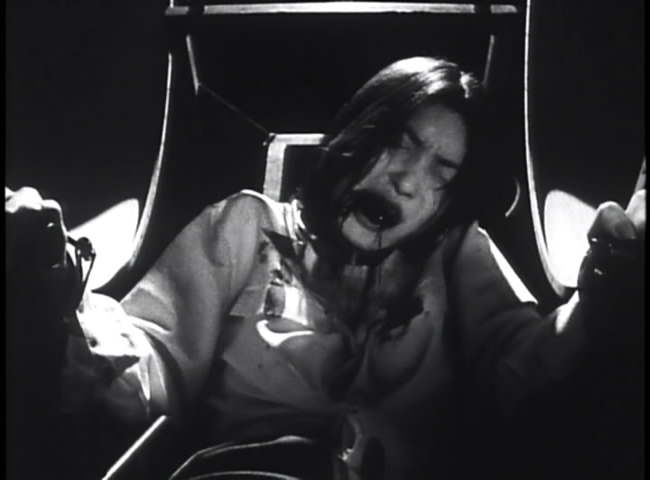
The Visuals: The entire movie takes place in a few rooms, and from this perspective, its pretty amazing how realistic and unique a film can be made on such a small budget. The shots seem very well designed to make maximal use out of very meager special effects. Massive quantities of dry ice, blood and screaming make up the bulk of the visuals, but this ends up working in black and white. But what Rubber’s Lover gives you is an ever increasingly insane set of scenes. Whether or not you follow the meager plot, you’ll see some truly bizarre scenes. The weirdest has to be the sex scene near the end where the guy orgasms while ripping the screaming woman’s chest open while he’s watched by the laughing corporate slimebag.
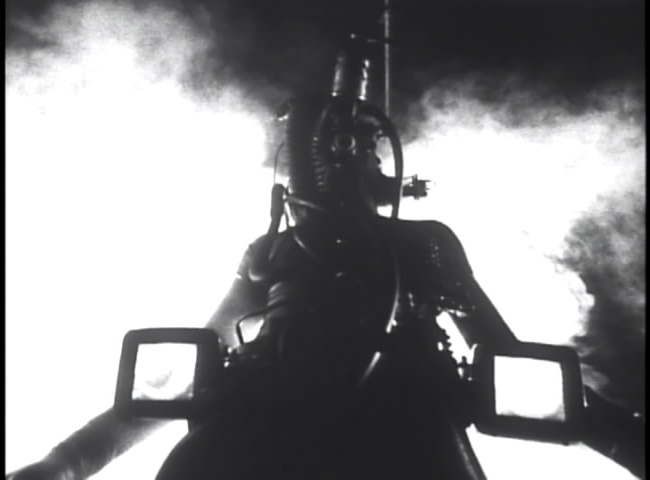
The Bottom Line: If you’re looking for a Japanese Cyberpunk flick that gives you something different then Tetsuo, Rubber’s Lover is a decent choice. It doesn’t have the deep philosophical message that Tetsuo does, but the cinematography and crafting is done well enough that you will get the sense you are watching an art film versus a purely bizarre sequence of violent images. Truly, Fukui put out a far better film than one would expect given an almost non-existant budget. I had taken a point away for the constant screaming, which began to detract from the film after a while, but I finally decided this is sort of necessary screaming (mostly). All in all, Rubber’s Lover is well worth watching if you’re interested in understanding Japanese Cyberpunk as a sub-genre. Check out page 2 if you want to see more visuals - WARNING - some are explicit.
Page 2: More Screencaps –>>
~See movies similar to this one~
Tags: cyberpunk movie review RubbersLover
Year: 2003
Directed by: Jun-hwan Jeong
Written by: Jun-hwan Jeong
IMDB Reference
Degree of Cyberpunk Visuals: Very High
Correlation to Cyberpunk Themes: Medium
Key Cast Members:
Lee Byeong-gu: Ha-kyun Shin
Kang Man-shik: Yun-shik Baek
Su-ni: Jeong-min Hwang
Inspector Choo: Jae-yong Lee
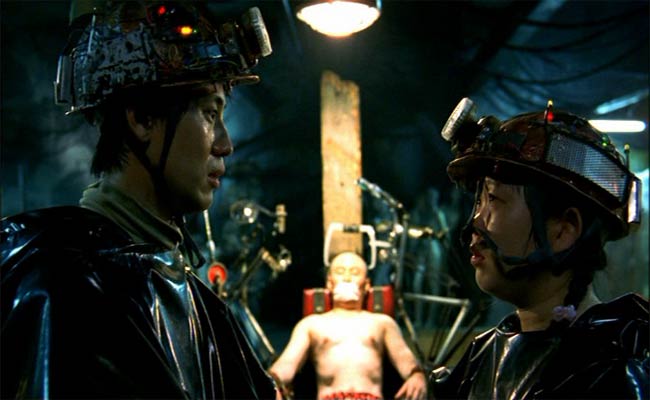
Overview: Here’s another movie that ranks really high on the weird shitometer scale - yet another cyberpunk movie from the tour-de-force of cyberpunk movies that Korea has become. Save the Green Planet is one of the only movies that has just about every movie genre represented. You’ll find everything from Gilliam-like comedy to graphic horror, to action, to scifi-thriller here. And of course, we get a large dose of Japanese-like Cyberpunk torture visuals in this terrific Korean production.
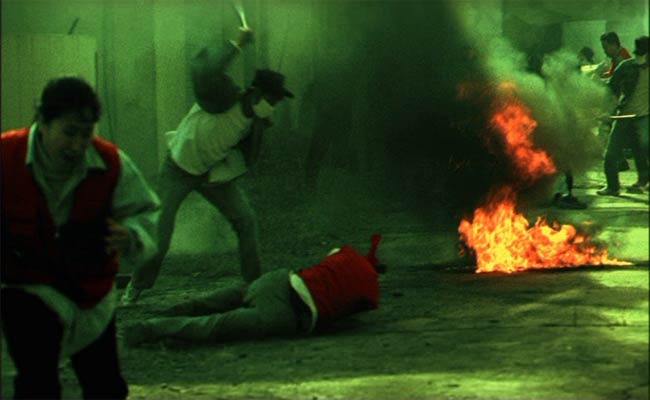
The Story: Save the Green Planet is about a completely strange guy and his even wierder ballerina girlfriend - our antihero is convinced that a certain CEO is really an alien in disguise. He has determined its his job to root the alien out and kill him if necessary, just like all the other “potential” aliens he has found in the past. After capturing him, He cuts the CEO’s hair off, as the aliens use hair follicles to communicate. He has other reasons for requiring foot torture and chest ironing. After all, good torture must always have a reason, right?
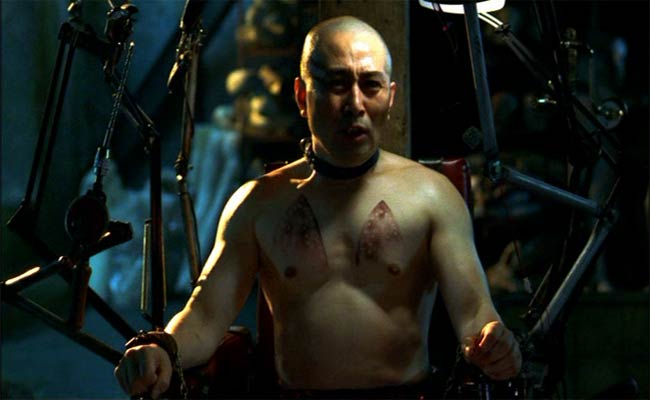
The Bottom Line: Its hard to go too much further into the plot for fear of giving key aspects of the movie away. Suffice to say the ending is terrific and fully open to interpretation, and actually has interesting similarities to the ending of Brazil. On top of this, Save the Green Planet is expertly shot, and wonderfully edited. The pacing is simply superb. It’s really hard to imagine that this is Jun-hwan Jeong’s first movie.
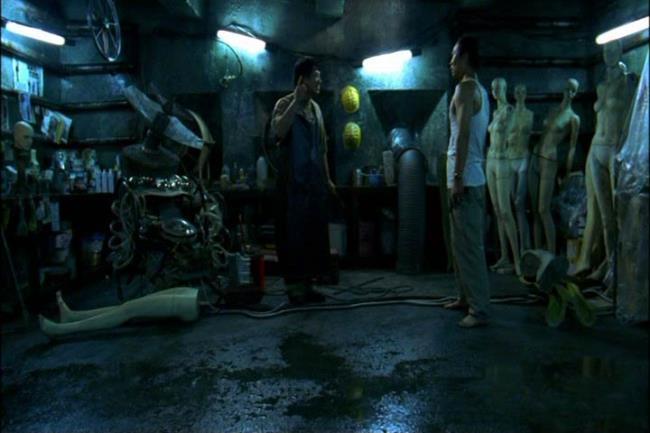
You gotta love the dolls everywhere. This guy makes them for his job.
Fair warning: Be warned though. This is a truly weird movie that his NOT for the squeemish at heart. While not a “true” Japanese cyberpunk movie in that, um, its Korean, and doesn’t totally take the “no boundaries” idea, it’s pretty darn close, and certainly merits mention in that sub-genre of cyberpunk. So much so that if you find real Japanese cyberpunk movies to be too much for you (And BTW, Tetsuo 2 doesn’t count, as this movie really doesn’t break ground and isn’t that good besides), Save the Green Planet is a decent entry to at least experience a similar pacing and mindset. Got to Page 2 for more screen caps.

Page 2: More Screen Caps–>>
~See movies similar to this one~
Tags: cyberpunk movie review Jigureul jikyeora
|

































































